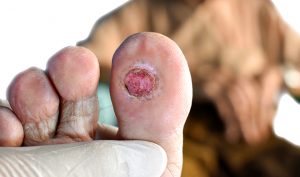Diabetes develops when your blood sugar (blood glucose), is too high. Your body utilizes glucose as its main energy source. Although the body is capable of producing glucose, it also comes from the food you eat.
Insulin, a hormone secreted in the pancreas, facilitates the entry of glucose into your cells for use as an energy source. If you have diabetes, your body either doesn’t produce enough or any insulin at all or uses it improperly. This causes glucose to remain in your blood and it cannot enter your cells.
Diabetes increases the risk of harm to the heart, kidneys, nerves and eyes. Some cancers have been linked to diabetes. By taking steps to prevent or control diabetes, you may lower your risk of developing health problems associated to the condition.
Types of diabetes:
Below are the most prevalent forms of diabetes.
- Type 1
- Type 2
- Gestational diabetes
Type 1 diabetes:
If you have type 1 diabetes, your body produce little or no insulin. Your insulin producing cells in pancreas are targeted and eliminated by your immune system. Type 1 diabetes is generally diagnosed in children and young people, although it can occur at any age. Those with Type 1 diabetes must take insulin every day to stay alive.
Type 2 diabetes:
The cells in your body does not effectively use insulin if you have type 2 diabetes. Although the pancreas may produce some insulin, it does not produce enough to maintain your blood glucose levels within the normal range. Type 2 diabetes is the most typical type. If you have risk factors for the disease, like being overweight or obese and a family history of the condition, you are more likely to acquire type 2 diabetes. Even in infancy, type 2 diabetes can develop.
You can delay or avoid type 2 diabetes by being aware of the risk factors and changing your lifestyle, such as reducing your weight and maintaining active lifestyle.

Gestational diabetes:
A type of diabetes that develops during pregnancy is known as gestational diabetes. After delivery, this kind of diabetes typically goes away. However, your risk of developing type 2 diabetes in the future is higher if you had gestational diabetes. Sometimes type 2 diabetes can be identified while a woman is pregnant.
Prediabetes:
Individuals with prediabetes have blood sugar levels that are elevated but not high enough to be identified as having type 2 diabetes. If you already have prediabetes, your chance of developing type 2 diabetes is higher. You also have a higher risk of developing heart disease than people with normal glucose levels.
Other types of diabetes
Monogenic diabetes is a less prevalent kind of diabetes brought on by a change in just one gene. Diabetes may also result from damage to pancreas from diseases such cystic fibrosis or pancreatitis, or surgical removal of the pancreas.
Symptoms of diabetes:
- Dry mouth and increased thirst (polydipsia)
- Frequent urination
- Fatigue
- Blurred vision
- Unexplained weight loss
- Numbness or tingling in your feet or hands
- Cuts and sores that heal slowly
- Frequent skin and/or vaginal yeast infections

Causes of diabetes:
- Insulin resistance
- Autoimmune disease
- Hormonal imbalances
- Pancreatic damage
- Genetic mutation
Diagnosis of diabetes:
Three tests can measure level of blood glucose,
- Fasting blood glucose test
- Random blood glucose test
- A1c (HbA1C or glycated haemoglobin test

